- Joined
- Sep 12, 2023
- Messages
- 5,014
- Location
- Roselle, IL
- Cars in Garage
- 1
- Vehicle Details
- 1994 Cougar XR7 DOHC TR3650
Which ever fits your application best for routing of lines. Some do have better attachment types for braided lines, etc. mine is more like the lower one and I was able to put it after the radiator and route the hoses well. Sometimes the above type have better mounting solutions or attachment for fans.And the preference between these different types of coolers?
View attachment 13102
Vs.
View attachment 13103
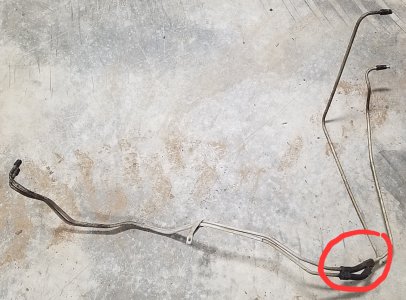
Hose clamps are not enough. I had cut my steel line to add the cooler after the radiator and about a year after the rebuild I found out. I had blown the line off and pumped it dry smoking everything leaving me w/ nothing but 1st gear. Always flare the remaining steel line if you don't replace it all the way back to trans w/ braided line. Aeroquip makes a hose that uses their barbed fittings without clamps and they do not leak.Did you buy that cooler? It looks decent and big enough for a stock setup. They are pretty simple install; compression fittings are fine. Even hose clamps are okay to use, it not a high-pressure location.
You got the radiator adapter which is good. IIRC they are kind of hard to find. I think I still have my aftermarket one in storage, from back when it had the automatic
I'm running this on top of the radiator cooler.
FWIW, I haven't ever heard of coolant seeping into the trans cooler. Not saying it couldn't happen, but I've never heard of it.
. As for bypassing the radiator, tapping into where those rubber lines are would be perfect. Just make sure there is a barb on the end of the line, and use the high pressure fuel injection hose clamps instead of just the worm gear clamps.
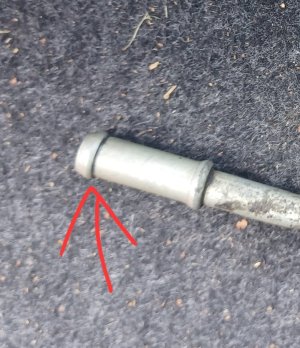
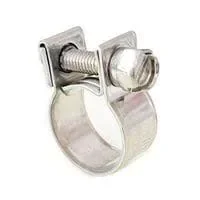
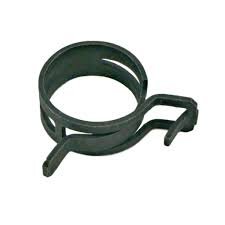
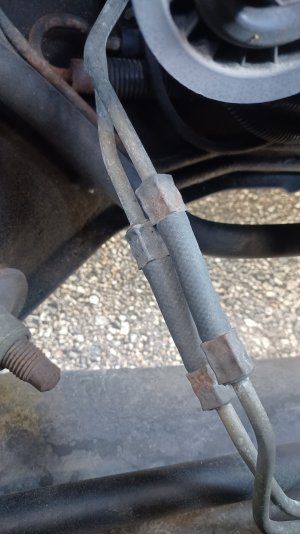
Yes, that is a barb. If you have that, you’re good to go. Use the first style clamp, I don’t trust the spring style to hold enough pressure. As for the hose diameter, I believe the stock cooler lines are 5/16”, so try to get a cooler that has 5/16” inlet/outlet. Alternatively, with enough lube and muscle, you can force 5/16” hose onto a 3/8” barb, so if you go that route, get the hose on the cooler before putting it in the car, and leave the hose long so you can trim it back to the proper length once installed and attach to the existing lines.Maybe it's time for another poll. I've read about it...but it could well be one-off anecdotes.
A barb?Is this what a barb is?
View attachment 14131
If so, then yes. I looked at V6 in the yard, cut the short rubber portion up to the metal line, and looking into the metal line, about 1/8" in, I could see that outward curved ring. The difficult part will be getting the rubber, including the metal clamp, off the line.
And high pressure fuel injection hose clamps? These?
View attachment 14132
What about this type?
View attachment 14133
This is what's there in my car currently. I imagine I'll have to carefully cut the existing clamps with a Dremel:
View attachment 14134
One obstacle could be that this looks to be a smaller diameter hose than what I'm seeing used on coolers.
. As for the hose diameter, I believe the stock cooler lines are 5/16”, so try to get a cooler that has 5/16” inlet/outlet.
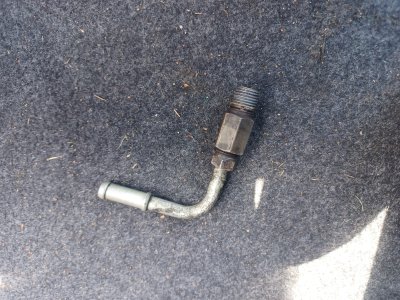
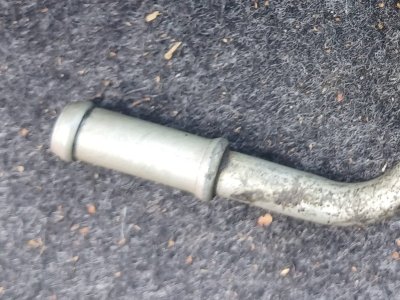
Use the first style clamp, I don’t trust the spring style to hold enough pressure.

Someone earlier suggested installation between the condenser and radiator,
That is why i made the brackets to mount the cooler, didn't want to use the zip tie method.On the installation front, I see tons of coolers that are simply installed using zip ties going through the cooler fins and then through the condenser fins. Huh? I mean it looks weirdly basic; I'd be concerned that A. the zip ties somehow damage either unit, or B. that the cooler impedes airflow to the A/C.
Someone earlier suggested installation between the condenser and radiator, and yes, there are about 2" in-between the two. But I can't help but feel that distance is by design (?).
For your setup, have you considered just making new trans cooler lines? Easy enough to bend/flare the tubing just need the proper fittings
It will work, just keep an eye on it.I was just going to use hose.
Yes! When it happened to me I bypassed the rad to the Auxiliary cooler and I added another Auxiliary cooler downstream. I will never run trans thru rad ever again on my bird. I just passed the 100k mark on the last rebuild and the fluid looks like it did when I got it back. It shifts well every time. I may try the grill thermometer probe after an hour trip and see what the temp is before cooler weather arrives.I have seen numerous instances of the trans cooler in the rad failing and cross-contaminating the fluids. And if/when that does happen, the coolant in the trans fluid soaks all the clutches, which are paper-backed, and very quickly causes catastrophic failure of the trans. I have said numerous times, there is absolutely no reason to keep the cooler in the rad. That was done as a cost-cutting measure, not because it is better. Needing the rad to “warm up” the trans fluid is also a myth. The cooler is on the cold side of the rad, which isn’t going to get any heat in it until the thermostat opens up, and I assure you the heat from the torque converter will warm up the trans fluid much faster than it takes for the coolant to get up to 180 or 195 or whatever the thermostat temp is. If you’re running a good quality external cooler, the one in the radiator is nothing but a liability.
Stacked plate VS fin & tube. Buy once, cry once i guess?The two types of cooler, are plate type, and multipass type.
Plate type cools better, but is more expensive.
Is there a fix for this?
